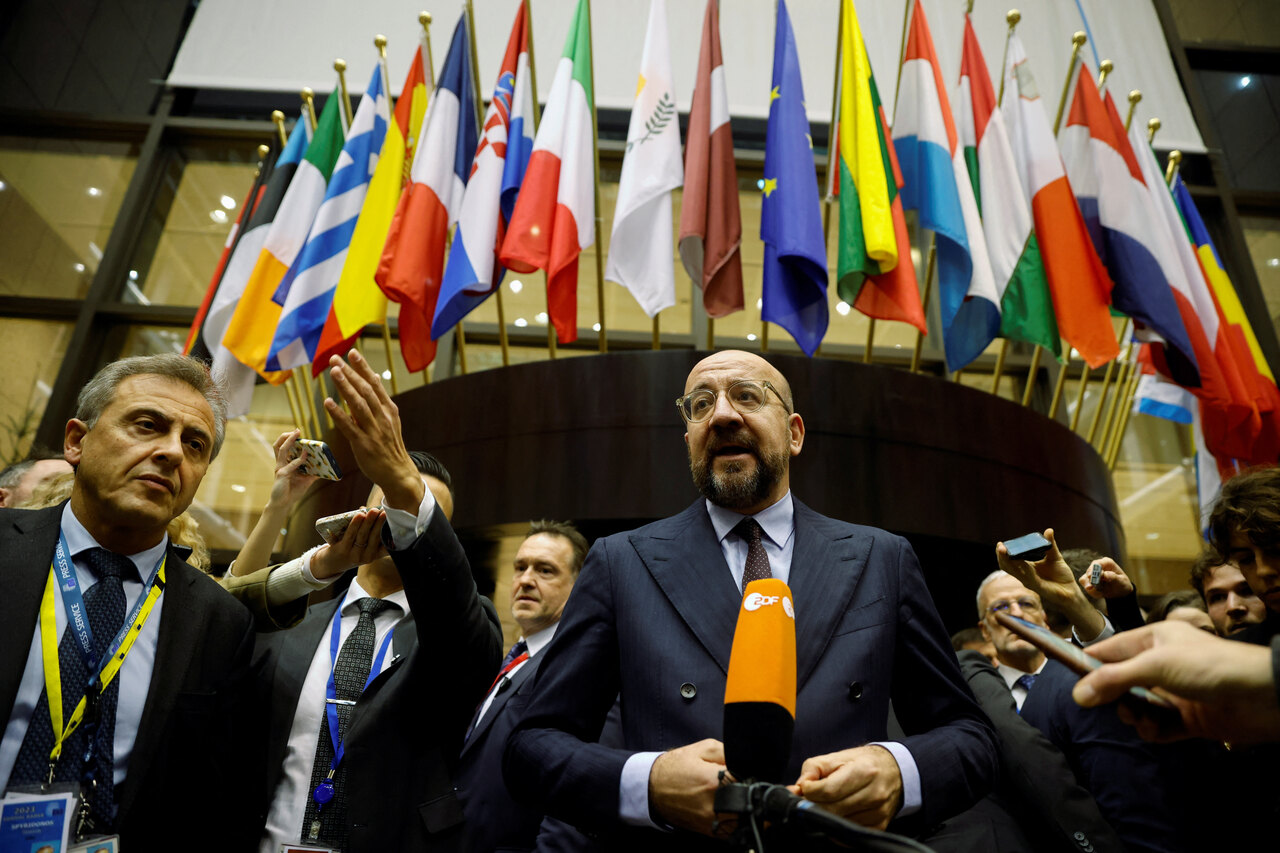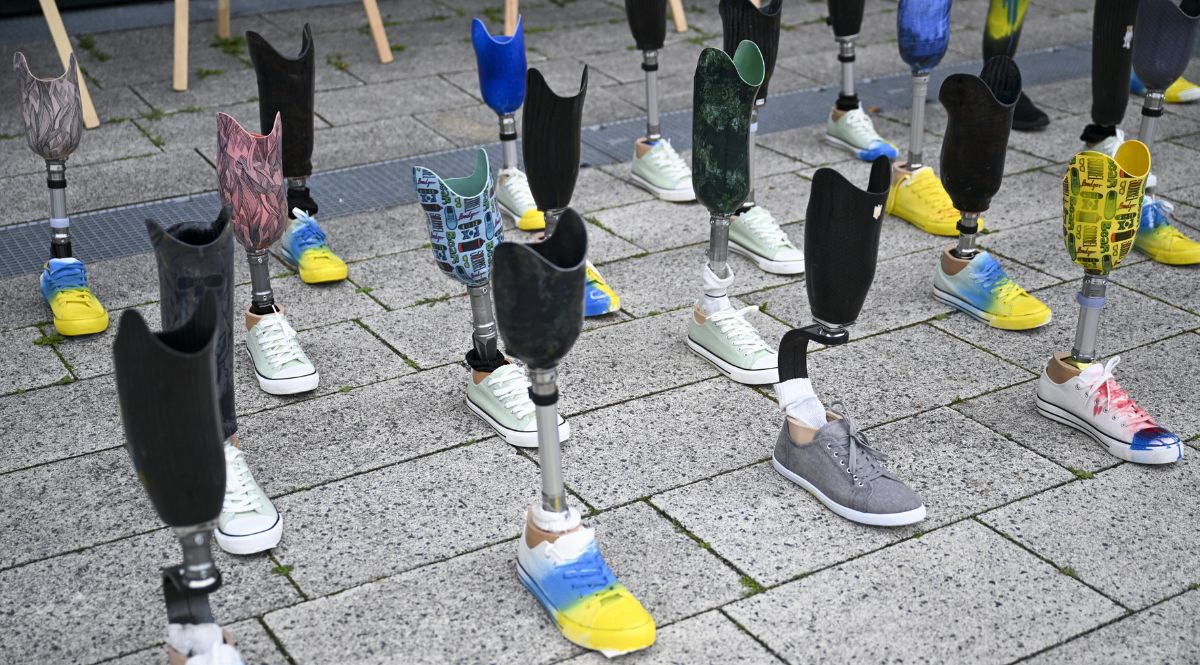Mobilising Investment Despite a War: EU Economic Assistance to Ukraine
The EU has significantly increased the pool of funds to support investment in Ukraine following the Russian invasion of 2022, but it should adapt its assistance to the war situation. Among other things, the European Commission (EC) could further increase the availability of insurance for companies against war-related risks and assist in expanding Ukrainian administrative capacity for the delivery of local projects.
.png) Anton Shynkarenko / Reuters / Forum
Anton Shynkarenko / Reuters / Forum
In June this year, at the Ukraine Recovery Conference in Berlin, the EC presented the first package of projects to support public and private investment from the Ukraine Facility for 2024-2027, the so-called Investment Framework (Pillar II). It is based on the financial mechanisms of the European Fund for Sustainable Development Plus. Between 2017 and 2020, Ukraine received around €200 million from it, subsidising mainly public sector infrastructure projects in energy and transport.
The Needs of Ukraine’s Economy
Although the Russian invasion in 2022 severely weakened Ukraine’s economy, with GDP falling by 29.1% at the time, it began to stabilise from 2023 onwards. The estimated economic growth in 2023 was 4.8%, however, GDP was just 74% of Ukraine’s 2021 total. While growth is expected to be 3-4% in 2024, GDP would reach its pre-war level only in 2030. The improvement year on year is due, among other things, to the normalisation of the state budget thanks to foreign financial aid, a restrictive monetary policy, and the resilience of Ukrainian citizens and businesses, which are largely continuing to work during the war. The relative stabilisation of the economy provides a basis for investment projects, at least in areas not covered by active hostilities. Ukraine needs additional funding to repair regularly damaged critical infrastructure and to implement investments in key sectors of the economy, as identified in the Ukraine Plan 2024-2027: energy, transport, agriculture, critical raw materials, the digital and green transformations, and manufacturing. The estimated cost of ongoing infrastructure reconstruction in 2024 is €13.6 billion, and only 37% of this amount (€5 billion) has been covered so far. According to the IMF, the foreign aid gap for Ukraine between 2024 and 2027 could be around €80 billion.
EU Investment Framework Assumptions
Planning on a budget of €9.3 billion, the framework is expected to generate up to €40 billion of investment in the key sectors identified in the Ukraine Plan. These are mainly guarantees from the EU budget (€7.8 billion) to cover the risk of various types of financial and investment services, such as loans or insurance. For example, covering a loan with an EU guarantee means that if the borrower defaults, the EU covers the missing funds up to a certain ceiling. The remaining €1.5 billion is earmarked for grants under so-called blended finance (loans combined with non-refundable grants) and technical assistance, for example, for consultancy for businesses to develop grant applications. The EU will allocate at least 15% of the guarantees to micro, and small and medium-sized enterprises (SMEs). The projects launched in June this year for 2024-2025 with a budget of €1.4 billion are expected to bring in around €6 billion of investment. They are a continuation of pre-invasion activities and mainly concern the energy, transport, IT, utilities, and SME lending sectors.
The strategic and operational guidelines of the framework are developed by the Steering Board, which consists of representatives of the EC and Member States. The EC disburses funds through international financial institutions and EU Member State institutions, including development banks, which can work with Ukrainian banks on, for example, SME lending. Projects for 2024-2025 are being implemented by, among others, the European Investment Bank (EIB), the European Bank for Reconstruction and Development (EBRD), the International Finance Corporation, Bank Gospodarstwa Krajowego (Poland), KfW (Germany), and eight Ukrainian banks, including PrivatBank and Kredobank. The EIB is responsible for implementing 25% of the guarantee budget (€1.95 billion). The EC is working on concluding projects to be launched in the period 2026-2027.
Challenges
The private sector may have limited interest in EU assistance given the ongoing war. According to the Kyiv School of Economics, private investment has totalled only about €1.53 billion in Ukraine in the two years since the Russian full-scale invasion. Even before 2022, foreign investment was low (€6.56 billion in 2021) due, among other things, to problems with corruption and an opaque judiciary, and it declined significantly after the invasion. Ukrainian companies, on the other hand, are postponing plans to increase production and investment due to the intensified hostilities in the second half of this year, so their loan requirements remain moderate. Barriers to the development of their business include worsened product export conditions and labour shortages. Business perceives EU aid as highly bureaucratic and requiring lengthy applications for funds. In order to increase the involvement of the private sector, the Ukrainian authorities have set up a pilot base for EU projects requiring funding at investportalua.com.
Companies are also struggling to obtain war-risk insurance. Several schemes funding it to varying extents do not meet their needs. One is an insurance programme for cargo shipments across the Black Sea (Ukraine with Lloyd’s and Marsh), a project to insure business property (INGO, ARX, among others) and two comprehensive war-risk insurance programmes for foreign or Ukrainian investors (Ukraine with the Multilateral Investment Guarantee Agency and Development Finance Corporation). Ten export credit agencies from Ukraine and G7 and EU countries (e.g., The Export Credit Insurance Corporation, KUKE from Poland) have launched insurance for companies mainly from their own countries. Two new initiatives are in the pipeline, including one financed by the EBRD with EU funding.
The problem will be to ensure an even distribution of aid for infrastructure projects in Ukraine. So far, they have been implemented mainly in large cities such as Kyiv, Dnipro, and Odesa. Promoting EU programmes locally is hampered by the insufficient presence of representatives of the financial institutions implementing them in Ukraine. The mechanisms for coordinating the implementation of aid between the central and regional levels and the capacity of the Ukrainian administration to prepare projects are also insufficient. Therefore, the Ukrainian authorities is to create a team of officials in the central administration responsible for the implementation of EU financial assistance, supported by foreign donors, and apply uniform standards in the preparation of projects.
Ensuring a transparent business regulatory environment remains a key determinant in increasing investment in Ukraine. Although the country has adopted comprehensive institutional reforms in the field of anti-corruption, these require further systemic and multi-year changes, such as increasing transparency in the judiciary and during public procurement. The EU has an important role in stimulating reforms in the field of the rule of law in Ukraine, as it sets the relevant conditions in this sphere during both the financial assistance and the EU membership process. In a situation of political deadlock on the EU side regarding accession negotiations with Ukraine, there is a risk that such reforms will slow down.
Recommendations
The EU should better adapt its investment support to the war situation. The EC could simplify and speed up procedures for the distribution of funds for infrastructure projects, especially in the field of energy. To increase the absorption capacity of the Ukrainian administration locally, it would be advisable to subsidise the development of teams of officials in the regions dealing with investment projects and to train them, for example, in strategic planning or project management. In the private sector sphere, the EC could further increase the availability of war-risk insurance. Financial institutions implementing EU assistance could increase their advisory services to Ukrainian companies on project preparation and implementation and increase the presence of their representatives on the ground. To ensure Ukraine’s effort to improve the regulatory environment for business, the EC should strictly apply the conditionality mechanism for reforms in the field of rule of law and work towards a smooth accession negotiation process. The Ukrainian authorities and the EC could also assist with effective communication of Ukraine’s reform progress among foreign investors.





